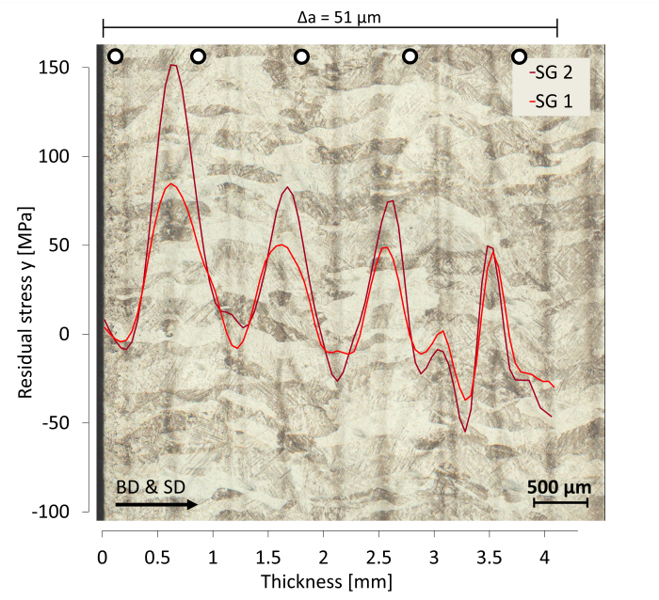| The Slitting Method for Residual Stress Measurement: : Mesocale stresses in Additive Manufactured Part |
Mesocale stresses in Additively Manufactured Ti-6Al-4V
Strantza, M., Vrancken, B., Prime, M. B., Truman, C., Rombouts, M., Brown, D. W., Guillaume, P., and Van Hemelrijck, D., 2019, "Directional and oscillating residual stress on the mesoscale in additively manufactured Ti-6Al-4V," Acta Materialia, 168, 299-308. https://doi.org/10.1016/j.actamat.2019.01.050. preprint (pdf).
RESULTS: First ever measurement of layer to layer stress oscillations in AM part
|
 |
Titanium AM specimens:
|
 |
Most slit depth increments ever for a sliting measurement:
|
 |
Strain data shows mesoscale:
|
 |
Only "pulse method" able to fit data:
|
 |
